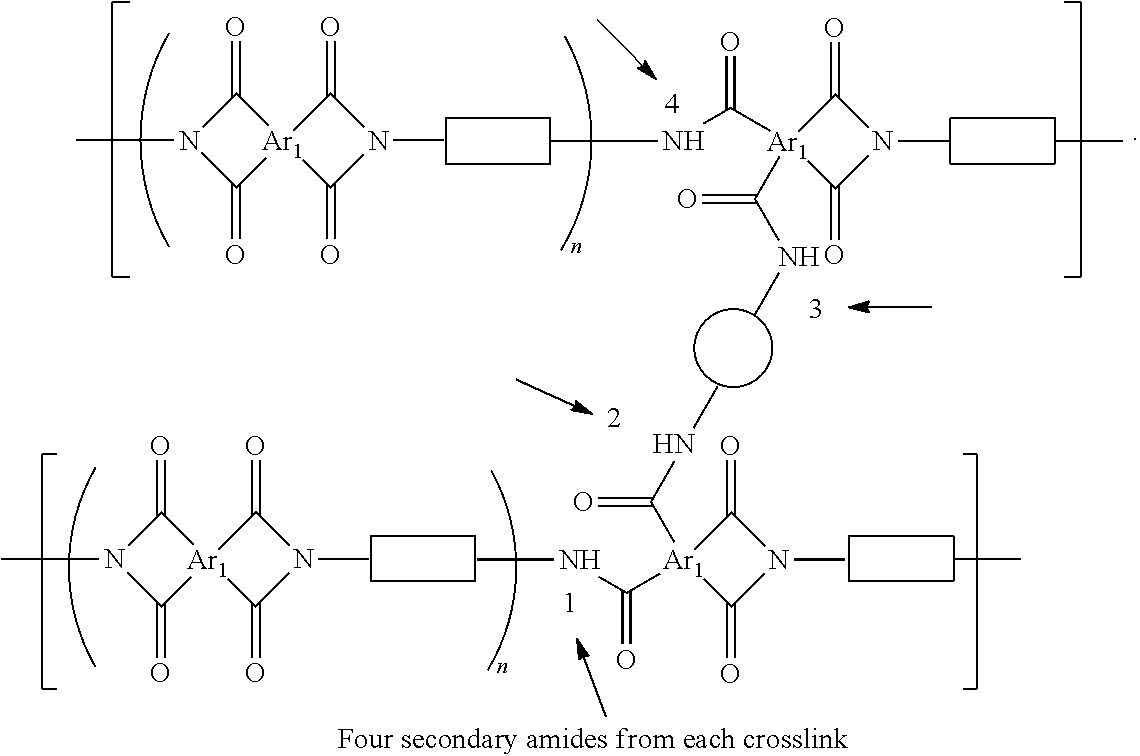Nanofiltration membranes and methods of use
a technology of nanofiltration membranes and membranes, applied in the field of chemical processing, to achieve the effect of reducing chemical reactivity
- Summary
- Abstract
- Description
- Claims
- Application Information
AI Technical Summary
Benefits of technology
Problems solved by technology
Method used
Image
Examples
Embodiment Construction
[0036]Various materials are currently used to (or have been described as suitable for) the manufacture organic solvent-compatible nanofiltration membranes (OSNs). The most common membrane types are polysiloxane-based membranes, polyimide membranes, and polyamide imide membranes. In each case, it is common for the polymer or co-polymer making up the membrane to be cross-linked to prevent swelling in polar organic solvents and / or to control the filtration pore size in the membrane.
[0037]Such cross-linking improves solvent resistance, but the inventors have fobund that residual unreacted functional groups from the cross-linking process lead to problems in certain applications where reactive chemicals are present in the process stream being treated with such membranes. Additionally, other components used in the manufacture of the membranes can contain reactive functional groups in addition to those arising from cross-linking processes. For example, materials such as polyesters and polyi...
PUM
| Property | Measurement | Unit |
|---|---|---|
| Substance count | aaaaa | aaaaa |
Abstract
Description
Claims
Application Information
 Login to View More
Login to View More - R&D
- Intellectual Property
- Life Sciences
- Materials
- Tech Scout
- Unparalleled Data Quality
- Higher Quality Content
- 60% Fewer Hallucinations
Browse by: Latest US Patents, China's latest patents, Technical Efficacy Thesaurus, Application Domain, Technology Topic, Popular Technical Reports.
© 2025 PatSnap. All rights reserved.Legal|Privacy policy|Modern Slavery Act Transparency Statement|Sitemap|About US| Contact US: help@patsnap.com



